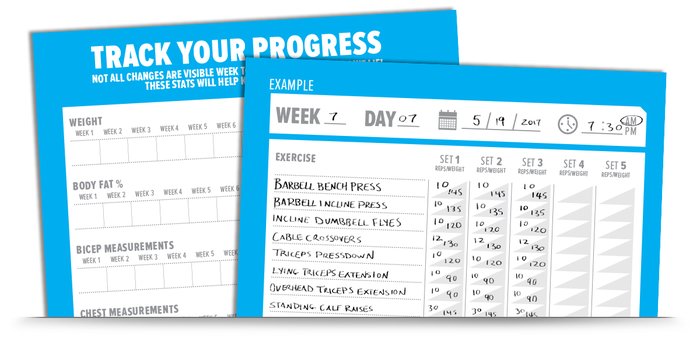Quick: How much can you bench? No, not ten years ago for a single rep with all your teammates cheering you on. And no, not just your heaviest top set from a recent workout. How much was on the bar during your last workout, every rep of every set, from the warm-up to the bitter end?
Using that question as a guide, we can separate most of the lifting community into three groups:
- Those who have no idea
- Those who know the answer off the top of their head
- Those who may not have the answer, but know where to find it.
You don't have to be type two in order to be a successful lifter. But if you really want to get bigger and stronger, you should definitely consider spending some time in camp three, according to MuscleTech athlete Santi Aragon. What's the biggest difference between how he trains and how you do? In a word: documentation.
"I document all of my workouts," Aragon explains. "That's the only way I know I'm getting better and improving week to week."

Documenting your workouts—particularly the weight and the number of completed reps—is one of the most overlooked steps any aspiring athlete can take to improve numbers and develop muscle. The most critical component, of course, is making a conscious effort to improve upon every workout, either by increasing the reps or increasing the weight.
"For example," says Aragon, "If I completed 225 for 6 reps the week before, I might try to hit 225 for 8 reps the next week."
This dedication to progress and commitment to detailed documentation allowed Aragon to increase his deadlift by nearly 300 pounds in a little over a year.
Of course, sometimes the top set isn't going to budge. When that happens—and it will—are you doomed to weakness? Nope. Here are other metrics you should be tracking, along with that heaviest set:
Total Workload: If muscle growth is your goal, this may be the most important thing you can measure. How much weight did you lift overall in your workout? If you did 4 working sets of 8 with a certain weight, say 225, that's actually more overall work than 3 sets of 10 with the same weight—it's basic math, but if hypertrophy comes from volume, every bit of extra work counts!

If your warm-ups sets were heavier or had more reps than last week, that counts, too. You could even add a back-off set after your top set to up the total work. But it all comes back to documentation. Track each pound of each rep and you might find you're actually progressing more than you realized.
Rest Periods: Don't stop with just sets, reps, and weights—keep track of your rest periods. Were you ready for your next working set after 2 minutes, whereas the same weight used to leave you panting and sitting for 3 minutes or more? That's progress—but only if you include it in your notes.
Rate of Perceived Exertion (RPE): This is a number that powerlifters regularly use to categorize the difficulty of their training. It may sound unscientific, but with practice you can make it work quite effectively, particularly for big lifts like the bench. Were you seeing stars after 3 reps? That may be a 9 out of 10. Two weeks later, is the same weight for the same reps easy enough that you aren't asking yourself if you've filled out your will? Consider it a seven—and call it progress.
You don't have to include this type of information for every movement. Otherwise, you may find yourself doing more writing than lifting—and seriously, who cares what your RPE is for a set of Zottman curls? But consistently documenting these numbers for your big lifts in every workout makes it far easier to measure—and increase—your strength. And as Santi Aragon proves, it also happens to be just as beneficial for building a well-rounded physique.

